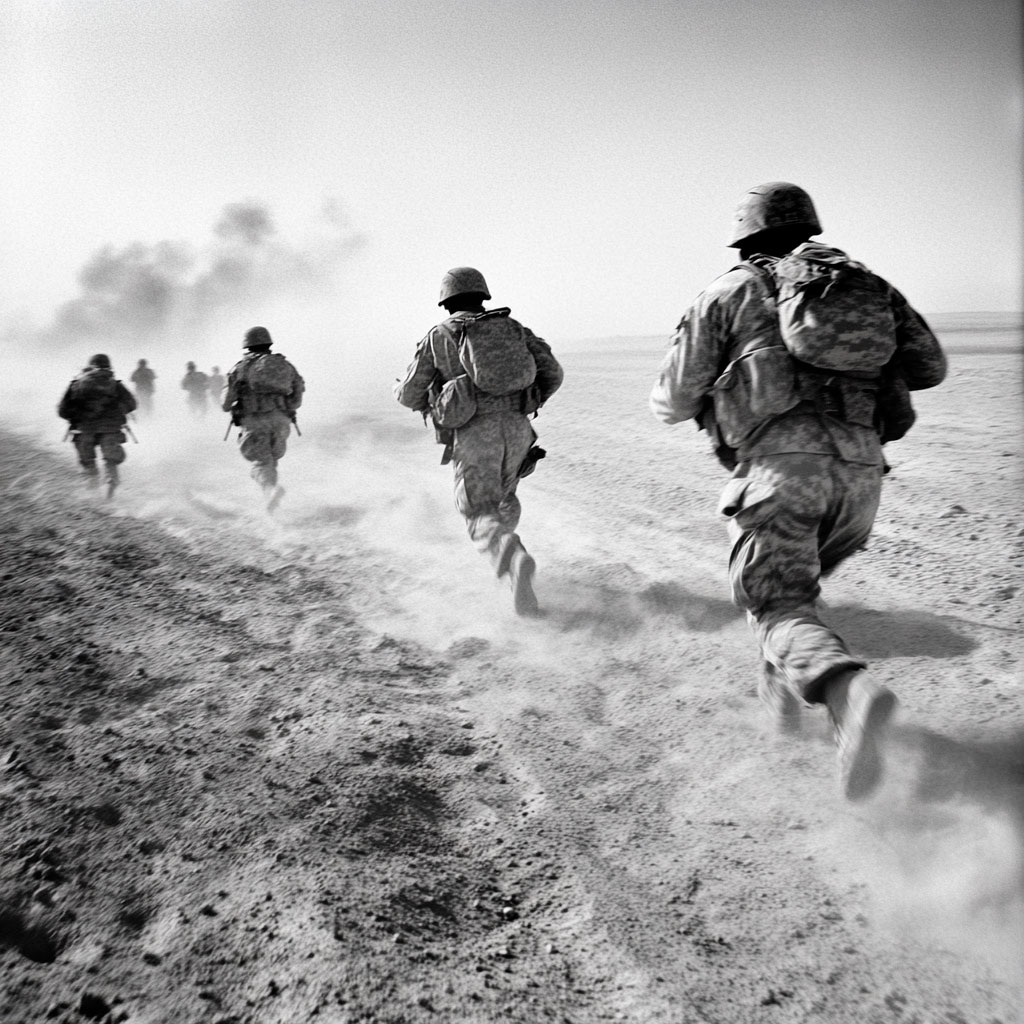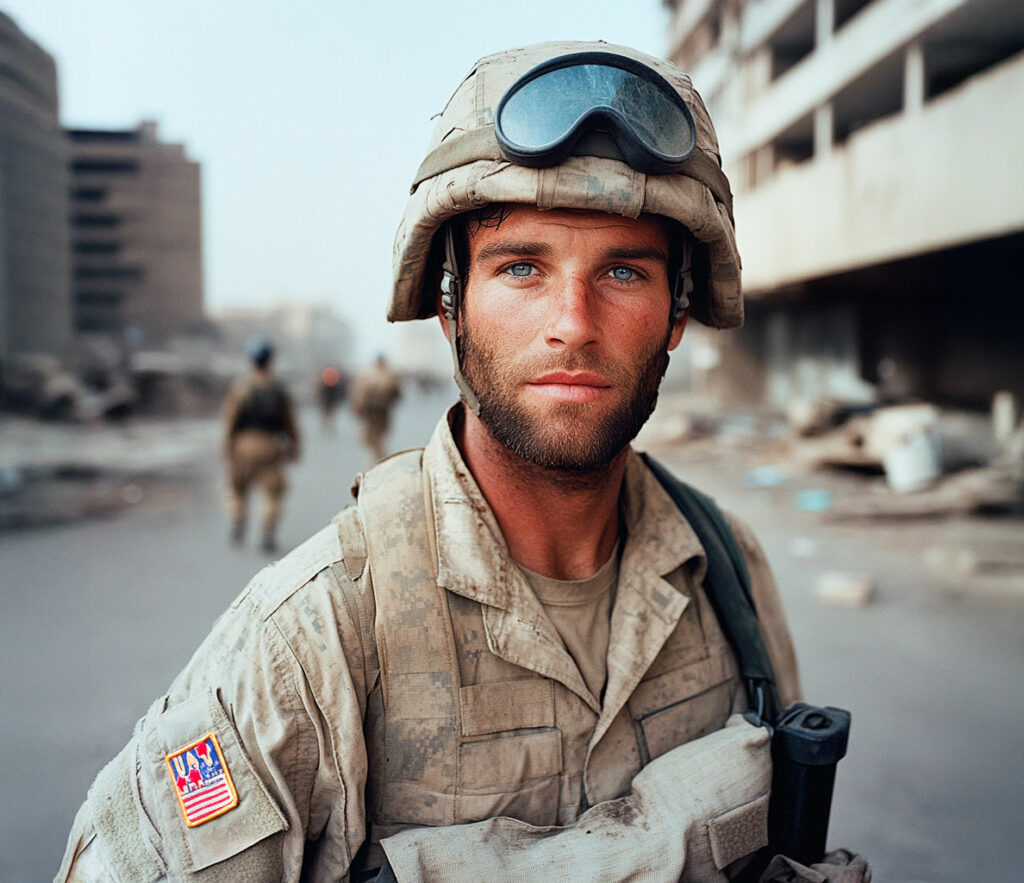An in-depth exploration of the Gulf War (1990–1991), examining its causes, key players, major battles, turning points, and lasting consequences.
The Gulf War began on August 2, 1990, when Iraq invaded Kuwait, citing economic disputes and territorial claims. The international community, led by the United States, formed a coalition to oppose Iraq’s aggression. After diplomatic efforts failed, Operation Desert Storm commenced on January 17, 1991, with a massive air campaign. This was followed by a ground assault on February 24, leading to the liberation of Kuwait by February 28. The war showcased advanced military technology and coalition warfare, resulting in significant Iraqi casualties and infrastructure damage. Post-war, Iraq faced severe sanctions and internal unrest, while the conflict had lasting impacts on regional politics and military strategy.
What Were the Reasons for the Gulf War (1990–1991)
The Gulf War’s origins are rooted in a complex interplay of economic, territorial, and political factors.
Economic Strain: Post the Iran-Iraq War (1980–1988), Iraq was economically debilitated, owing approximately $37 billion to Gulf nations, with $14 billion owed to Kuwait. Iraq accused Kuwait of overproducing oil, which depressed prices and further strained Iraq’s economy. Additionally, Iraq alleged that Kuwait was siphoning oil from the Rumaila oil field, exacerbating tensions.
Territorial Disputes: Iraq claimed historical rights over Kuwait, asserting that it was part of its territory during the Ottoman era. This claim was used to justify Iraq’s invasion and subsequent annexation of Kuwait as its 19th province.
Political Ambitions: Saddam Hussein aimed to position Iraq as the dominant power in the Gulf region. By controlling Kuwait, Iraq would gain significant leverage over global oil supplies, enhancing its geopolitical influence.
Diplomatic Failures: Despite negotiations and warnings from the international community, Iraq proceeded with its invasion on August 2, 1990. The United Nations condemned the act, leading to economic sanctions and the formation of a coalition to expel Iraqi forces from Kuwait.

Who Was Involved in the Gulf War (1990–1991)
The Gulf War saw a coalition of nations uniting against Iraq’s aggression towards Kuwait.
Iraq: Led by President Saddam Hussein, Iraq invaded Kuwait, citing economic grievances and territorial claims. The Iraqi military, one of the largest in the region, was central to the conflict.
Kuwait: The invaded nation, under the leadership of Emir Jaber Al-Ahmad Al-Sabah, sought international assistance to repel Iraqi forces and restore its sovereignty.
Coalition Forces: A United Nations-sanctioned coalition, comprising 35 nations, was formed to liberate Kuwait. Key contributors included:
- United States: Provided the majority of military personnel and equipment.
- United Kingdom: Deployed significant air and ground forces.
- France: Contributed troops and military assets.
- Saudi Arabia: Hosted coalition forces and provided logistical support.
- Egypt and Syria: Supplied troops and participated in combat operations.
United Nations: Played a pivotal role by passing resolutions condemning Iraq’s invasion and authorizing the use of force to expel Iraqi troops from Kuwait.
The Leaders of the Gulf War (1990–1991)
Saddam Hussein (Iraq): As President, Saddam’s decision to invade Kuwait was driven by economic pressures and a desire to assert regional dominance. His leadership style was authoritarian, and he maintained tight control over Iraq’s military and political apparatus.
George H. W. Bush (United States): The 41st U.S. President played a crucial role in forming the international coalition against Iraq. He emphasized the importance of upholding international law and protecting global oil supplies.
Norman Schwarzkopf (United States): As Commander of the U.S. Central Command, General Schwarzkopf led coalition forces during Operations Desert Shield and Desert Storm, overseeing both strategic planning and execution.
Colin Powell (United States): Serving as Chairman of the Joint Chiefs of Staff, Powell was instrumental in military planning and advocated for overwhelming force to ensure a swift victory.
Emir Jaber Al-Ahmad Al-Sabah (Kuwait): The Emir led Kuwait during the invasion and subsequent liberation, working closely with coalition leaders to restore his nation’s sovereignty.
François Mitterrand (France): The French President supported the coalition, contributing military forces and emphasizing the importance of international cooperation.
Margaret Thatcher (United Kingdom): The British Prime Minister was an early advocate for a strong response to Iraq’s invasion, aligning closely with U.S. policy and committing British forces to the coalition.

Was There a Decisive Moment?
A pivotal moment in the Gulf War was the initiation of Operation Desert Storm on January 17, 1991. This marked the beginning of a massive air campaign aimed at crippling Iraq’s military infrastructure. Over 100,000 sorties were flown, targeting command centers, communication lines, and supply routes.
The effectiveness of the air campaign severely degraded Iraqi capabilities, setting the stage for a swift ground assault. The subsequent ground offensive, launched on February 24, 1991, saw coalition forces rapidly advancing into Kuwait and southern Iraq.
The ground assault lasted only 100 hours, with Iraqi forces retreating or surrendering in large numbers. The rapid success of coalition troops demonstrated the disparity in training, technology, and coordination between the two sides.
One specific event within this phase was the destruction of retreating Iraqi convoys on the Highway of Death between Kuwait City and Basra. Coalition aircraft struck hundreds of vehicles, neutralizing a large segment of Iraqi forces and drawing global media attention. While this action underscored the coalition’s dominance, it also raised ethical concerns regarding the proportional use of force.
Another significant development was Iraq’s failed attempt to draw Israel into the conflict by launching Scud missiles at Israeli cities. The United States deployed Patriot missile batteries to defend Israel, and diplomatic efforts convinced the Israeli government to stay out of the conflict, thereby preserving Arab coalition unity.
By February 28, 1991, a ceasefire was declared. The combination of air superiority, ground maneuver speed, and political restraint made this sequence of events decisive. Iraq’s inability to defend occupied territory or to split the coalition signaled the collapse of its strategy.
Major Battles of the Gulf War (1990–1991)
The Gulf War featured several important military engagements during both the air and ground campaigns. Each had a tactical objective and contributed to the collapse of Iraqi forces.
Operation Desert Storm – Air Campaign
The air war began on January 17, 1991 and lasted 38 days. Coalition forces launched over 100,000 sorties. The targets included:
- Iraqi radar systems and air defenses
- Airfields and aircraft hangars
- Command and control centers
- Bridges, supply depots, and communication lines
Iraq’s air force was largely neutralized in the early days. Many pilots flew to Iran to avoid destruction.
Battle of Khafji (January 29–31, 1991)
Iraqi forces attempted to seize the Saudi town of Khafji near the Kuwait border. The battle marked the first ground engagement involving U.S. Marines and Saudi forces. After two days of urban fighting and close air support, Iraqi troops were pushed back. The coalition lost 43 troops, while Iraq suffered over 300 fatalities and lost more than 30 armored vehicles.
Ground Offensive – “100 Hour War” (February 24–28, 1991)
The coalition launched a multi-axis ground attack into Kuwait and southern Iraq:
- U.S. Marines attacked directly into Kuwait City from the Persian Gulf.
- U.S. Army VII Corps conducted a flanking maneuver through the Iraqi desert, bypassing fixed defenses and engaging elite Republican Guard units near Medina Ridge.
- British and French forces, along with Arab allies, secured the western flanks.
The Battle of Medina Ridge was one of the largest tank battles of the war. U.S. forces engaged Iraq’s 2nd Republican Guard Corps, destroying over 300 tanks while suffering minimal losses.
Highway of Death
As Iraqi troops retreated, coalition aircraft attacked convoys on Highway 80. Thousands of vehicles were destroyed. The exact number of casualties is debated, but visual evidence of the destruction became symbolic of the coalition’s overwhelming firepower.
Each battle demonstrated the effectiveness of coalition planning, the integration of air and ground assets, and the weakness of Iraqi logistics and morale.

Was There a Turning Point?
The turning point of the Gulf War was the overwhelming success of the air campaign during the first weeks of Operation Desert Storm. The coalition’s ability to degrade Iraq’s infrastructure without committing ground troops changed the nature of the conflict. By the time ground operations began, Iraq’s capacity to resist was already diminished.
Iraq lost approximately 38 percent of its armored forces before a single ground engagement occurred. Command and control structures were disrupted. Power grids, radar installations, and bridges were systematically eliminated. This ensured Iraqi divisions were isolated and unable to support each other effectively.
The Battle of Khafji played a psychological role. Iraq’s inability to hold the town despite deploying experienced troops undermined internal confidence. It also demonstrated the coalition’s readiness for ground operations and validated its combined arms doctrine.
Another crucial moment came from the coalition’s use of GPS and precision-guided munitions. These technologies allowed forces to strike deep behind enemy lines, reducing collateral damage and increasing mission success rates. Iraq’s reliance on static defenses, such as the extensive trench systems in Kuwait, became a liability when mobility and air power determined battlefield control.
Politically, the decision by the United Nations Security Council to authorize force under Resolution 678 in November 1990 set the stage for international legitimacy. The coalition’s legal and diplomatic backing limited Iraq’s support and isolated it on the world stage.
Finally, the rapid execution of the ground campaign, lasting only four days, marked the operational culmination of the turning point established during the air war. The Iraqi army collapsed, and organized resistance ceased.
Together, the air superiority, technological advantage, and global coordination of forces shifted the balance early, making resistance ineffective before it could escalate into a prolonged conflict.
Consequences of the Gulf War (1990–1991)
The Gulf War ended with the liberation of Kuwait, but its political, military, environmental, and economic effects were far-reaching, both regionally and globally.
Human and Military Costs
Coalition casualties were limited, with 294 U.S. troops killed, including both combat and non-combat deaths. Other coalition members recorded less than 100 fatalities combined. Iraqi losses were substantial, with estimates of 20,000 to 35,000 soldiers killed and over 75,000 wounded. Civilian deaths in Iraq are estimated between 2,500 and 3,500, mostly during the bombing campaign.
The war also revealed the impact of Gulf War Syndrome, a condition reported by returning coalition veterans, including symptoms like fatigue, chronic pain, and neurological issues. The cause remains debated, with theories ranging from chemical exposure to vaccine interactions.
Environmental and Infrastructure Damage
Iraq deliberately set fire to over 600 Kuwaiti oil wells, causing one of the worst man-made environmental disasters. It took more than nine months to extinguish the fires. The release of millions of barrels of oil into the Persian Gulf devastated marine ecosystems. In Kuwait, large areas were contaminated with oil lakes and soot.
Iraq’s infrastructure suffered massive damage. The air campaign destroyed power plants, bridges, refineries, and telecommunications, crippling the economy and leading to long-term humanitarian impacts. After the war, sanctions imposed by the UN remained in place, severely limiting Iraq’s ability to rebuild.
Political Repercussions
Saddam Hussein remained in power after the war, but Iraq’s military strength and regional influence were weakened. The Shiite and Kurdish uprisings in early 1991 were violently suppressed by Iraqi forces, leading to massive refugee crises. The coalition chose not to advance to Baghdad or overthrow Hussein, a decision that would be revisited in 2003 during the Iraq War.
In the Gulf region, the war led to an increased U.S. military presence, especially in Saudi Arabia, Kuwait, and Qatar, which would have long-term geopolitical consequences. Osama bin Laden cited the U.S. presence in Saudi Arabia as a justification for al-Qaeda’s later actions.
The war also changed military doctrine worldwide. The effective use of satellite-guided munitions, electronic warfare, and real-time intelligence during the Gulf War influenced military strategy in subsequent conflicts, including those in the Balkans and Afghanistan.
The Gulf War was brief in duration but had lasting implications across multiple domains. It reshaped military alliances, redrew security priorities, and deepened tensions that would continue into the 21st century.
Back to the Wars section